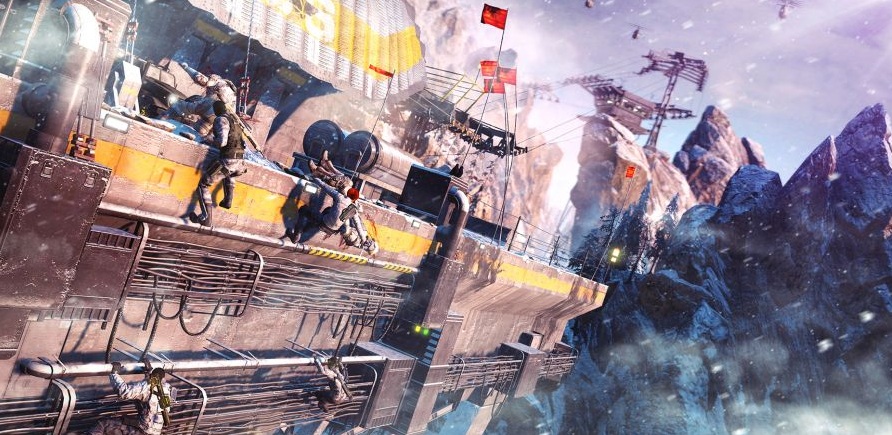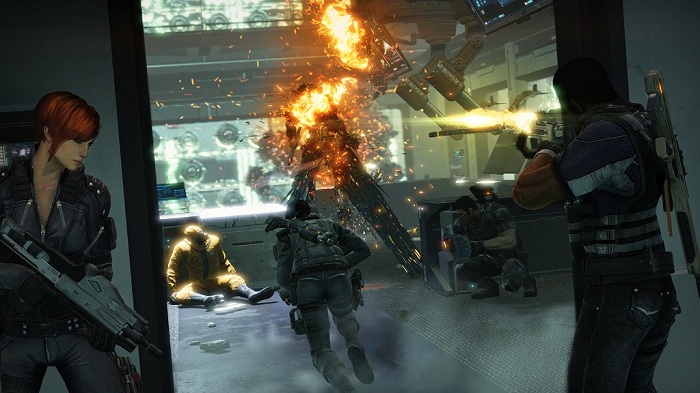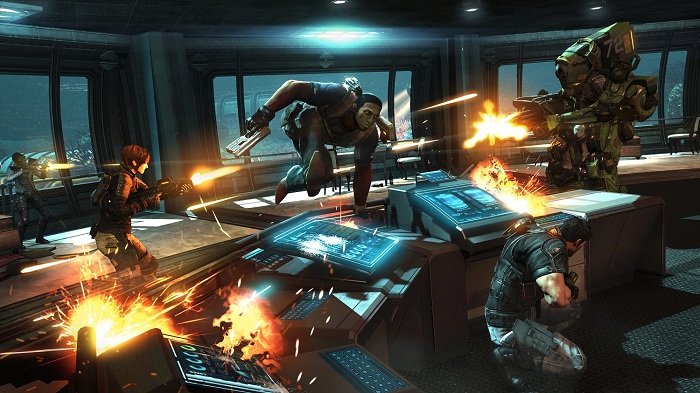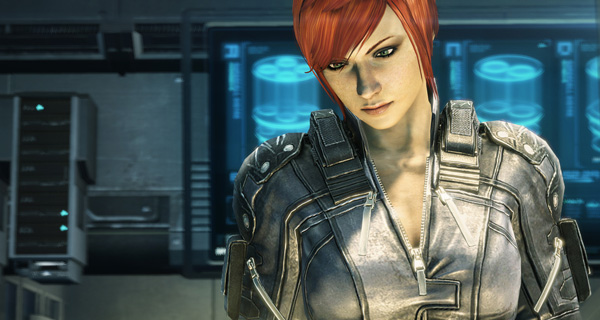Interview with Ted Price – CEO and Founder of Insomniac Games
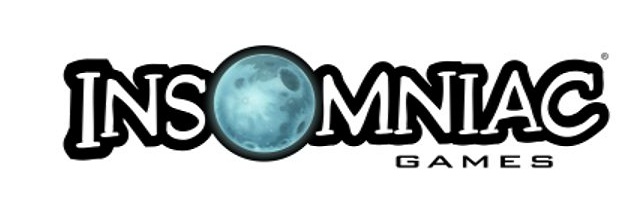 Thanks to EA Australia, Jennifer was recently given the chance to go hands on with FUSE and interview Ted Price – Founder and CEO of Insomniac Games. They talked all things FUSE, the challenges associated with establishing a new IP, and who would win in a fight between Sparx and Clank. Check out the full interview below.
Thanks to EA Australia, Jennifer was recently given the chance to go hands on with FUSE and interview Ted Price – Founder and CEO of Insomniac Games. They talked all things FUSE, the challenges associated with establishing a new IP, and who would win in a fight between Sparx and Clank. Check out the full interview below.
Insomniac has had a long and exclusive history with Playstation – from Disruptor, to Spyro, Ratchet and Clank and Resistance – but FUSE marks the company’s first multiplatform release. What made you decide to release FUSE on multiple platforms, and what are you most excited about in releasing the game?
We made the decision to go multi-platform several years ago and that was driven by the need to reach a larger audience and we had a lot of people who play Xbox 360 asking us ‘when are you going to release a game for us’ and for many years we didn’t have the bandwidth to actually do it. So FUSE, when we finally got to the point where we actually, practically could create a multi-platform game, we jumped at it. So what am I most excited about in terms of going multi-platform?
Yeah.
I’m most excited about getting feedback from Xbox 360 fans. Because I play Xbox 360 and I really enjoy it. I also play Playstation 3 but I feel like we’ve only been talking to, really, half of the console audience so now we’re on the verge of really opening up to a much, much larger group of players.
Awesome. Insomniac Games have always been known for their fantastic and memorable weapons – can players expect to see some impressive weaponry in FUSE (which we saw some of in this demonstration)?
So you experienced some of this.
Yes.
Which character were you playing?
I started with Izzy and ended up with Dalton.
Oh, okay. So every one of the fuse powered weapons in the game is different in terms of its initial functionality and then functionality you unlock down the road, and our goal with those weapons was twofold. First, to create something exotic that you don’t see in shooters and avoid the standard machine gun paradigm you see in most shooters. And the second was to create a weapon set from the ground up that could be used in a co-op experience. So if you, I’m sure, you were playing with Dalton, people were firing through your shield as you were moving around?
Yeah, yeah.
So that’s just one simple example of how players can work together with these weapons. A more complex example could be that Izzy, one of your teammates has the Shattergun. She can crystallise groups of enemies that end up becoming these black shiny statues that are out in the playscape. If you shatter those with, say, a black hole chain from the Warp Rifle it’s another way of just combining effort and you gain more points both players for doing things like that. You can combine all four weapons and get tons of points and those points are important as I mentioned earlier because there is a progression system in the game and the more experience points you earn, the more levels you move up and the more cool abilities and buffs you can unlock for each of the characters.
I noticed with the skill tree set, because that’s fairly unique for shooters, is that one of the ways you tried to implement to get people to work together, to build up more points?
Yeah, that is definitely one of the ways and the philosophy we had was to encourage co-op, not force it. So there’s never a point in the game where you have to play as one character to progress. You can play as all four of them, any character at any time, but we wanted to make sure that players felt good about working together as a team so thus doing something that’s fun with your experience points that you earn was important. So unlocking new abilities and new buffs was absolutely key. The other thing I want to point out about the skill trees is they’re different. All four characters have their own skill trees. There’s some cross over in terms of the skills that you unlock, but in a lot of the cases it’s unique skills for Izzy, unique skills for Naya, Dalton and Jacob.
Moving onto a similar topic, FUSE features four player co-op, and in an industry where online versus multiplayer is so popular and co-operative play seems to have taken a back seat, this is a refreshing change of pace. Do you feel the co-op element is something gamers will embrace and really get into?
I think so. I feel that as an industry of players, or a collection of players, we have become more and more social in general. We have become more connected thanks to technology and we like playing together. I also think we like playing against each other but we are of the opinion that co-op has a broader appeal because when you’re teaming up to accomplish an objective as a team there’s a satisfaction that you don’t necessarily get when you’re playing lone wolf in a head to head competitive game. That was the reason, one of the main reasons we moved in a purely co-op direction.
I noticed, looking at your online blog, that there were originally, when you first announced this game and announced it was co-operative, there were a few people asking where the player vs. player style of gameplay.
In the story, one of the great thing about have four characters is we have four completely different personalities and as you move through the game we start telling the backstory for each of the characters and that demonstrates why there is animosity among the team and they don’t gel particularly well, but by the end of the game you see that they’ve all made this emotional journey and they’ve become closer as a team. Interestingly, a lot of people have asked… well, I’ll let you ask the questions.
Actually, I’m coming up to character questions. FUSE has an interesting premise – what did you draw on when you were creating the game world, and the characters that inhabit it? Are any characters based on anyone you know in real life?
Not me personally. TJ Fixman, who was the writer on the game, may have drawn from some people that he’s friends with but in general it was important for us to clearly distinguish each of the characters and who they are in the game and who they were before they joined Overstrike (Overstrike is the name of the team these characters are on). So in several points in the game you get to experience flashbacks where they are reliving experiences that they’ve had and it gives you more insight into what drove them to Overstrike the team.
On the subject of the backstory of each of the characters, I have noticed you’ve put in quite a bit of effort to get their backstory out to the fans in the first place, such as with the digital comic with Radical Entertainment. Is this level of character detail something you consider important for the story you want to tell with FUSE?
Absolutely. We want people to identify with the characters in some ways and it was important not to have cardboard cut-outs in the game and we were facing an interesting challenge because when you have four players, or even two players who are playing together in a game it’s important to avoid having a cut scene every five minutes because that slows down the game and you may have one player who is not as interested in watching long, drawn out cut scenes as another. So we wanted to get the story out in different ways. And one of them was, as you mentioned, outside of the game and helping people understand who these characters are but in the game as well we have a lot of emergent dialogue that occurs while you’re playing to help you understand how these characters react differently to the events going on around them. And to take it a step further, it’s not just about the four characters on the team. We have a lot of other NPCs, villians, that you meet in the game and every single one of them is motivated in some different fashion by fuse, by the presence of this alien substance and by the end of the game hopefully people get a feel for how fuse has changed the lives of each of these people and potentially put other events into play.
The members of Overstrike 9 are a diverse group, and each appears to have their own personality, and their own gameplay strengths. However – if you absolutely had to choose a favourite from the four – the person you always play – who would it be and why?
If I absolutely had to choose, right. Always a question like that, I can’t just say I love them all. I really do like playing them all because strategically, in combat, they have such different abilities it’s really useful to be able to leap back and forth between all four and it also keep s the game fresh in terms of being able to experience very different combat approaches by playing all four. But the one I tend to gravitate to the most is Izzy Sinclair, she is the red head in the game who is a former intelligence broker. I like her personality, it’s pretty acerbic and she also has the Shattergun which gives her a sort of a duel archetype. She is a crowd control specialist, and I find it extremely satisfying to crystallise a whole bunch of enemies at once so my buddies can take them down but she’s also the healer so if I’m playing with other people who have potentially less experience than I do in the game, I can hang back and revive them when they go down and get into trouble and that for me is really satisfying to help out my friends, and it goes to the whole sense of co-op being important for players today.
The FUSE development has been through a few iterations, with the game’s concept and name changing. What lessons have you learned during the development cycle, and what’s the main thing you will take with you from this experience when developing games in the future?
Oh man, that’s a good question. We learned a lot on FUSE, at all levels from tech to story to game play and what we learned again, because we’d known this for a while but on every game we relearn it, is that it all comes down to core gameplay. The game has got to be fun at its very basic level. And what was challenging for us at the beginning was we had this concept of who Overstrike the team was and what the world was, and we had this concept for what the weapons should be but we had a lot of trouble making the weapons truly fun, and in the first trailer that we released in 2011 we showed off a couple of the weapons in action and one in particular there was Izzy’s Glue Gun and it showed Izzy firing this very Incredibles like gun at some bad guys and you saw these big balloons bubbling up. Well, in the game that wasn’t particularly fun. It wasn’t satisfying. Nor was Dalton’s Magshield particularly satisfying, nor was the Arcshot in that incarnation satisfying. It looked cool, but it wasn’t fun to play. It didn’t have the impact and so we went back and we asked ourselves what’s missing? And it really was that impact, it was creating a more visceral experience for the players and we just finally took the handcuffs off and said let’s go for it, let’s make these weapons over the top brutal. And when we did that it opened up all sorts of opportunities for not just making the weapons more fun for a solo player but opportunities to create more interesting co-op combinations with all four of these weapons.
What is it about FUSE that is going to make someone pick it up and try it over other games available now? What are the key points that you feel players are really going to love about FUSE?
It depends on what type of player you are, so it you’re a shooter player I think the weapons have a lot to offer in terms of showing off abilities and effects that you won’t see in other games right now. Most shooters today are modern military shooters that use guns you would find if you enlisted in the army but we let our sci-fi proclivities drive us when it comes to creating some pretty outlandish weapons. If you are a very social player I absolutely think the co-op aspects of the game will draw you to the game and keep you playing. If you’re an RPG fan, the progression system in the game definitely is built for people who appreciate the opportunity to customise the characters and level up and because each of the four characters has his or her own pool of experience what I find particularly satisfying is moving back and forth between them and operating them individually and customising each one. Since they don’t have a shared experience pool you really are rewarded for jumping back and forth between them as you play the game.
One word that describes FUSE?
Insomiac-esque. Seriously, a lot of people, even internally, we talk about creating that Insomniac feel for our games and sometimes it doesn’t come out until very late in production and it took us a while to get that feel. But for us at Insomniac it’s a combination of having tight controls, great camera work that really does support the genre whether it’s a platformer like Rachet or a third person shooter like FUSE, weapons that are unexpected and replay. I think that’s another important aspect of the game and I’ll point out that because of the skill trees and the progression system it’ll take players several play throughs to unlock everything in the game. And for me, as a collectionist, I love playing through games and seeing if I can max out and that’s where we provide a lot of depth for collectionist type players.
Is starting up your own intellectual property exciting, terrifying, or both?
Absolutely both. We own FUSE as an IP and we put a lot of our blood, sweat and tears into it as every developer does when you build a new game. To us being able to create new IP and new worlds is one of, if not the best reason to be a developer. The excitement of having a blank sheet of paper and that feeling that anything is possible is what keeps us all energised. And then as we dive into that world and start shaping it and coming up with what works and what doesn’t, it is a truly unique experience in terms of just things one could do as a profession as you’re always facing highs and lows. Highs when things work, especially things you didn’t expect to work and lows when things that you were sure would work, didn’t work. For us, it’s constantly a journey of discovery as we are building these new IPs to figure out what truly is fun and what we believe players will respond to.
Does it help coming to a new IP with the backing and history of something so successful like Rachet and Clank?
Oh yeah. Every game we create teaches us lessons and being able to draw on lessons from Rachet, lessons from Resistance and lessons even from Spyro are useful for us. At the same time, we play a lot of other games, all of us at Insomniac are generally hardcore players and we do our best to look around and understand what gamers are most interested in. It certainly seems lately that gamers really want new intellectual property and at this point we’ve seen a lot of sequels, we’re at the end of a console life cycle and I constantly see in comments on posts from players ‘please give us something new, I don’t want to play sequel x, I want to play a new game’.
I definitely understand that. Finally, who would win in a fight, Sparx or Clank?
I think Clank would kick Sparx’s ass. Clank has a lot more at his disposal. Sparx is agile, I think he can fire fireballs. But Clank, we were constantly updating him and especially when he turns into Big Clank I think Sparx would have a hard time against him.
Editor’s Note: Save Game would like to thank EA Australia for the chance to go hands on with FUSE, and to interview Ted Price. We would also like to thank Ted for providing his time and answering our questions. Finally we would like to thank Jennifer for her coverage of the event. Stay tuned for Jennifer’s hands on with the title.




